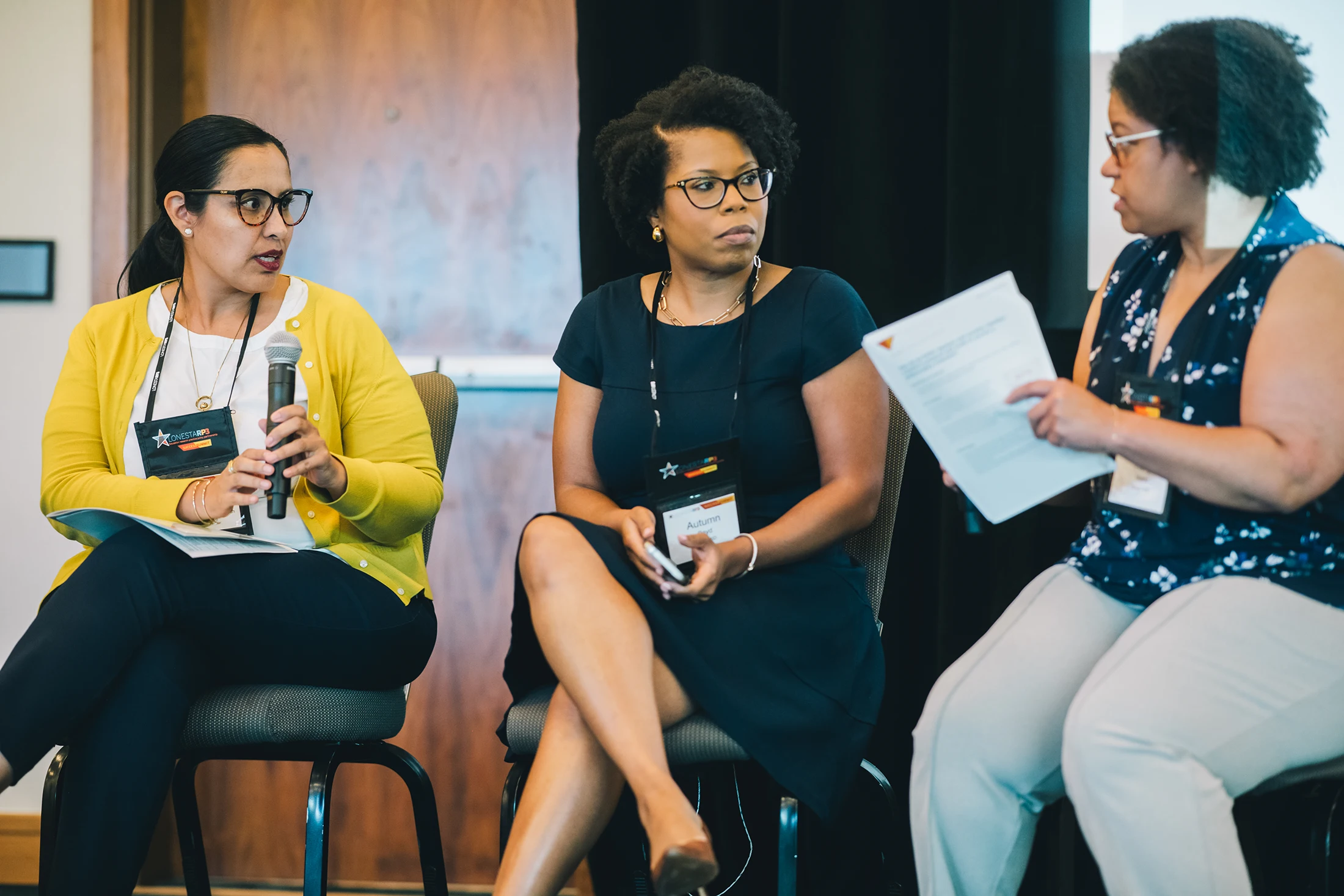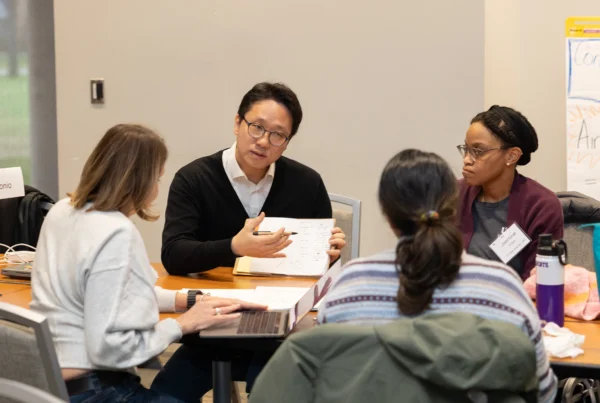LONESTARP3’s four research collaboratives have encountered something unexpected: calibration—and recalibration—has emerged as a pivotal moment in their shared journey.
These cross-organizational teams—composed of university faculty, nonprofit researchers, community practitioners, and policy advocates—convene regularly to build shared research agendas. For many team members, this is the first time they have worked with other external organizations. Each member brings well-established methods and definitions for how to interpret data, define a variable, and operationalize policy. Yet as they engage in conversation, long-held assumptions meet equally valid but different ones. That encounter requires recalibration—and from it, stronger, more thoughtful research practices are emerging.
This alignment process echoes findings from recent “many-analysts” research: even when multiple teams analyze the same dataset, their choices in cleaning, interpreting, or modeling can produce widely varied outcomes—until calibration processes narrow that variance significantly (Huntington-Klien et al, 2025).
In the collaboratives, recalibration looks like rethinking what’s meant by “participation,” or asking whether a variable is a proxy for something else. It happens not once, but again and again—each time a new insight enters the mix.
Rather than creating friction, these calibration moments are becoming spaces of trust and transformation. Members describe how hearing others’ approaches has prompted both personal learning and collective clarity. Over time, these moments generate a kind of emergent standard—one that no single institution could have defined alone. For one team, these calibration moments became a foundation for mutual learning, clarity, and purpose:
“Engaging in regular calibration sessions—in the form of ‘check-ins’—significantly strengthens our research collaborative by fostering a culture of shared understanding, mutual respect, and continuous learning. Specifically, by editing and revising questions or unpacking the essence of our work relative to the legislative landscape, we collaboratively articulate a sense of urgency for our research and look forward to informing policy. These meetings provide a structured space for team members to align research standards, methodologies, and interpretations—which not only improves the consistency and rigor of our work but also deepens our collective insight.”
Israel AguilarThe University of Texas Rio Grande Valley
This dynamic isn’t accidental—it’s the natural result of working in diverse, cross-sector partnerships. The calibration process aligns with growing research on interdisciplinary collaboration, which shows that shared protocols, explicit assumptions, and open communication are essential for surfacing hidden differences (Schweinsberg et al, 2021).
LONESTARP3 doesn’t mandate a specific collaborative model—but through regular dialogue, the collaboratives are discovering practices that keep their work coherent and actionable. That includes the value of making definitions visible, asking tough questions about assumptions, and leaning into the productive discomfort of recalibration. One collaborative, for example, has had to navigate shifting data definitions due to policy updates and evolving accountability frameworks:
“Shifts in policies and data systems have changed how we define and measure college and career readiness—especially with evolving CCMR metrics, definitions of CTE engagement, and emphasis on industry-based certifications. These changes can make it difficult to track consistent outcomes over time. Responding to these shifts has sparked valuable conversations in our team about how we define key measures, recognize data limitations, and balance immediate stakeholder questions with our deeper goal: understanding whether these initiatives support postsecondary and workforce success.”
Jennifer FreemanTexas Tech University
At this point in the research cycle, the collaboratives haven’t yet produced findings. But they have reached an inflection point: a phase when methodological differences shift from being obstacles to becoming opportunities. This isn’t a one-time alignment—it’s a continuous process of re-tuning.
As the collaboratives move toward the second half of their cycle, calibration may prove to be more than a milestone—it may be the essential practice that ensures their collective work is rigorous, relevant, and resilient.





